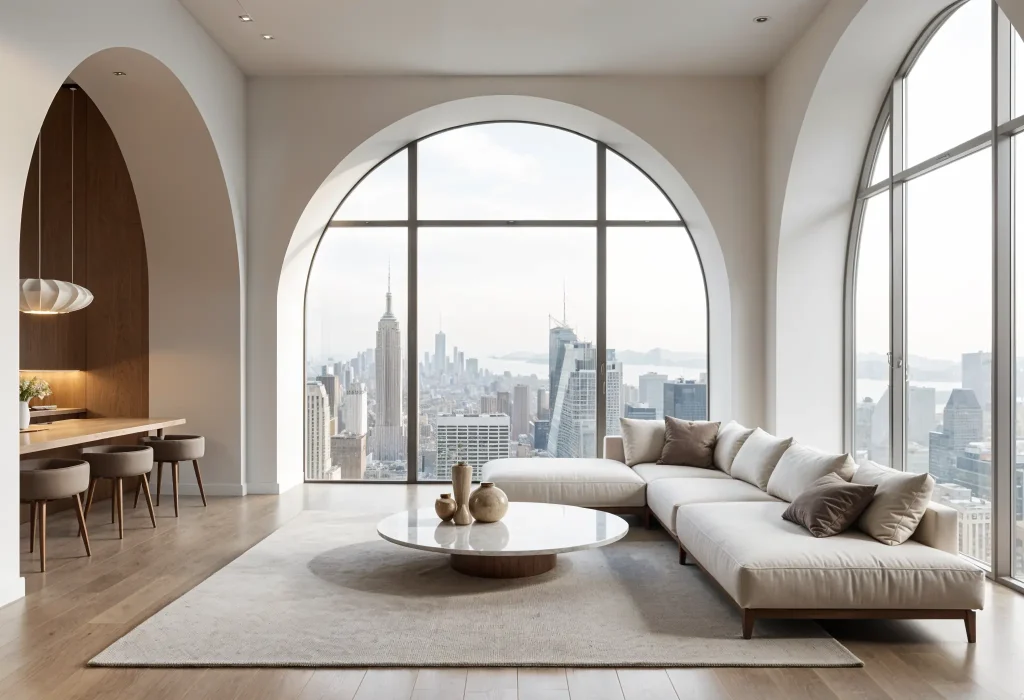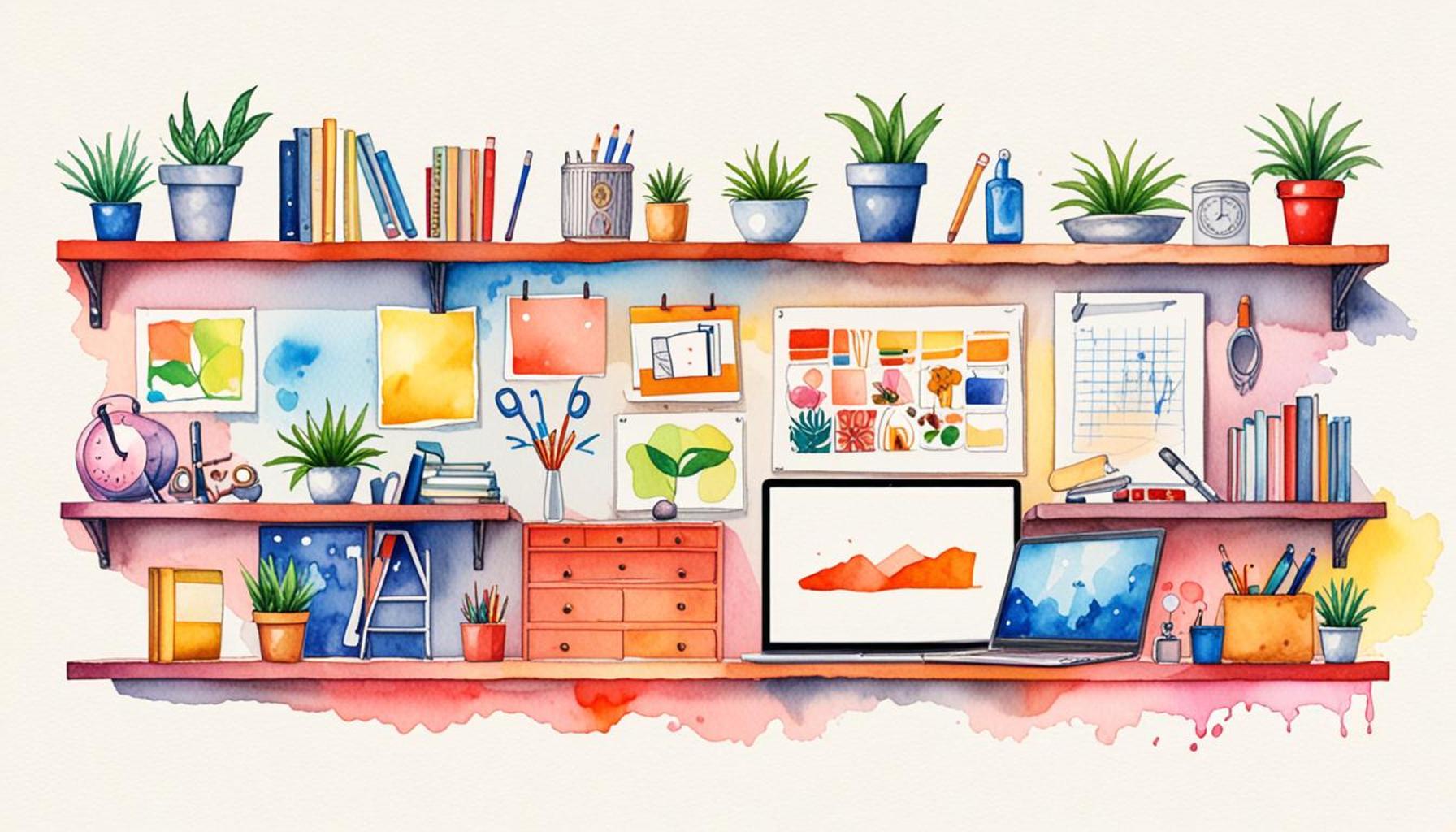The Role of Intentional Design in Reducing Emotional and Mental Clutter in Minimalist Living Environments

Exploring the Pillars of Minimalism and Intentional Design
In today’s fast-paced world, where distractions abound, many individuals are seeking refuge from the chaos that surrounds them. They are increasingly drawn to the concept of minimalism, not just as a lifestyle choice but as a transformative philosophy that emphasizes simplicity and intention. Central to this philosophy is intentional design, which offers a framework for cultivating environments that nurture serenity and clarity.
Minimalist living transcends mere decluttering of physical spaces; it embraces a holistic approach where every element works harmoniously with the others. Here are several key aspects of intentional design that embody this philosophy:
- Purposeful Layouts: Each piece of furniture or decor in a minimalistic space is selected with intent. For instance, in a small apartment in Brooklyn, a couple may opt for a sleek, multi-functional sofa that serves as both seating and storage. This approach ensures that functionality and aesthetic beauty coexist, maximizing space while minimizing excess.
- Emotional Connection: Well-designed spaces hold the power to evoke emotional responses. For example, a calming bedroom painted in soft, muted tones can help reduce anxiety and promote restful sleep. Such emotional resonance contributes significantly to an individual’s overall well-being and mental state.
- Sensory Considerations: Colors, textures, and lighting are selected purposefully to enhance mood and focus. Research has shown that natural light can improve productivity and reduce stress, highlighting why many minimalist spaces incorporate large windows or skylights that invite the outdoors in.
These features extend beyond mere aesthetic choices; they play a fundamental role in alleviating emotional and mental clutter, thereby enhancing quality of life. A thoughtful minimalist environment has the potential to create a sanctuary from the chaos of daily life, offering clarity and peace to its inhabitants.
As we delve deeper into the interplay between intentional design and minimalism, the myriad benefits begin to emerge. By closely examining how design choices impact emotional health, we can uncover paths to create spaces that resonate with our inner aspirations instead of reflecting our external chaos. It invites individuals to explore spaces that inspire creativity, promote mindfulness, and foster deeper connections with oneself and one’s surroundings.
Ultimately, embracing minimalism through intentional design could transform not just our physical environment but also our mental landscapes, leading to a more fulfilling and balanced life. Such a shift encourages a deeper reflection on what truly matters, urging us to craft environments that support our well-being rather than detract from it.

DISCOVER MORE: Click here for innovative decluttering techniques
The Influence of Intentional Design on Emotional Well-Being
Intentional design is more than just a style—it’s a deeply integrated approach to shaping our living spaces in ways that profoundly impact emotional and mental well-being. In a world where sensory overload has become the norm, thoughtfully curated environments can act as a balm for the mind, offering a reprieve from the overwhelming barrage of information and clutter. The importance of intentional design in minimalist living is underscored by several critical factors that directly affect our mental state.
Functional Aesthetics is a core principle of intentional design that speaks to both form and function. When every item in a space serves a specific purpose, it creates a sense of order that aligns with our innate desire for clarity. For example, a well-placed desk lamp in a minimalist home office not only provides necessary light but also contributes to an aesthetically pleasing environment that encourages focus and productivity. By creating spaces that marry beauty with utility, we can minimize distractions and cultivate an atmosphere conducive to mental clarity.
Mindful Material Use adds another layer to the discussion. The choice of materials can influence one’s emotional state. Natural materials, such as wood or stone, often evoke feelings of warmth and comfort, while synthetic materials might unknowingly contribute to a sense of coldness or detachment. By selecting materials that resonate emotionally, a minimalist design can foster a sense of connection with the space and, ultimately, within oneself. For instance, a living room adorned with hemp textiles and reclaimed wooden furniture can create an inviting sanctuary that seamlessly integrates nature into daily life.
Furthermore, the concept of visual harmony plays a significant role in reducing mental clutter. A cacophony of colors, patterns, and decor can leave individuals feeling overwhelmed. By opting for a limited color palette and simple patterns, minimalistic spaces create a cohesive visual experience. Such uniformity not only pleases the eye but also signals to the brain that there is order in the chaos, paving the way for a tranquil mental environment.
Benefits of Intentional Design in Minimalist Living
The benefits of intentional design in minimalist living environments can be numerous and impactful, including:
- Enhanced Focus: Reduced distractions lead to improved mental clarity and productivity.
- Decreased Anxiety: A neatly organized space fosters a sense of calm, reducing feelings of stress and anxiety.
- Improved Relationships: Intentional spaces that encourage connection can enhance social interactions and relationships.
- Promoted Mindfulness: Thoughtfully designed areas can serve as reminders to practice mindfulness and self-care.
By understanding how intentional design influences our emotional and mental landscapes, individuals can make more informed decisions when curating their own minimalist spaces. Whether aiming to create a tranquil home office or a serene bedroom, the elements selected can transform a living environment into a sanctuary of peace and clarity. Through such mindful decisions, we can significantly reduce emotional and mental clutter, ultimately leading to a more fulfilling and balanced existence.
| Design Aspect | Impact on Well-being |
|---|---|
| Open Spaces | Promotes clarity of thought, reducing feelings of being overwhelmed. |
| Natural Light | Enhances mood and enhances productivity through increased energy levels. |
| Simple Color Palettes | Creates a sense of calmness and tranquility, vital for mental relaxation. |
| Purposeful Furniture | Encourages functional use of space, streamlining daily routines and reducing chaos. |
The exploration of intentional design elements reveals how they distinctly shape minimalist living environments to curb emotional and mental clutter. Open spaces, often a hallmark of minimalist design, function as visual and psychological breathers, allowing the mind to engage in clearer thought processes and fostering a peaceful living atmosphere. Light, particularly natural light, plays a pivotal role in determining overall well-being. Its ability to enhance mood and productivity cannot be understated, making it an essential ingredient in minimalistic settings.Utilizing simple color palettes can further advance a tranquil environment, evoking feelings of calmness that many seek in today’s busy world. And furniture with purpose does more than serve as mere aesthetics; it actively supports a lifestyle that prioritizes function over form, aligning daily activities with a streamlined approach to living space utilization. By embracing these intentional design strategies, anyone can create a sanctuary that promotes mental clarity and emotional balance.
DISCOVER MORE: Click here to learn about mindful living
Creating Spaces for Emotional Resilience
In an increasingly complex world, spaces designed with intention can play a crucial role in fostering emotional resilience. Intentional design not only addresses aesthetics and functionality but also promotes emotional well-being by integrating concepts that encourage mental balance. Central to this idea is the notion of personalization, which allows individuals to make their spaces truly their own, thus establishing a deeper connection with their environment.
One effective way to personalize is through the inclusion of meaningful objects. This approach emphasizes surrounding oneself with items that evoke positive memories, such as photographs, heirlooms, or artworks that hold sentimental value. A minimalist environment does not require an abundance of items; rather, it thrives on selective curation. For example, a single framed photo of a cherished family vacation can transform a simple living area into a space that resonates with joy and comfort. This concept reinforces the idea that even minimalist environments can be imbued with personal significance, counteracting feelings of emptiness.
Another vital aspect of intentional design is the inclusion of nature. Research has shown that biophilic design—an approach that connects human beings with nature—can significantly enhance mental wellness. Incorporating plants, natural light, and organic shapes into a minimalist setting not only creates a calming atmosphere but also promotes feelings of balance and grounding. For instance, a living room adorned with potted ferns or a simple herb garden on the windowsill fosters a sense of tranquility, helping individuals to feel more connected to their surroundings. Furthermore, nature has a restorative effect that can mitigate stress and enhance cognitive function, making it an essential consideration for emotional resilience.
Spatial Arrangement and Mobility
The way spaces are arranged can fundamentally affect how individuals navigate and experience their environments. Open floor plans, a hallmark of many minimalist designs, encourage fluidity and movement, reducing the feeling of confinement that can accompany cluttered spaces. This sense of openness allows room for both physical and mental flexibility, enabling individuals to shift their focus and adapt to various activities seamlessly, whether it be working, relaxing, or socializing.
Flexible furniture that can be easily moved or reconfigured also enhances this adaptability, supporting the ever-changing needs of daily life. For example, a modular sofa can be rearranged to foster conversation during gatherings or pushed aside to create ample space for physical activities. By creating adaptable environments, intentional design empowers individuals to engage with their surroundings actively, reducing feelings of stagnation or overwhelm while promoting emotional dynamism.
In addition to mobility, the incorporation of ritualistic elements into living spaces can markedly improve emotional well-being. Designating specific areas for activities like meditation, yoga, or reading sends a clear signal to the mind that it’s time to unwind or focus. A simple corner with a cushion and a few books can serve as a personal retreat, emphasizing the importance of mental breaks amidst the chaos of daily life. Rituals established in thoughtfully designed areas can provide a sense of stability and purpose, grounding individuals in their personal narratives.
By understanding the profound impact of design choices in minimalist settings, individuals can curate environments that actively support their emotional and mental needs. Integrating personalization, nature, and flexibility into intentional designs not only reduces clutter but significantly enhances the overall quality of life. Such mindfulness in home creation sheds light on the transformative power of space, reminding us all that our environments can greatly shape our emotional landscapes.
DISCOVER MORE: Click here to unlock the secrets of decluttering
Conclusion
As we navigate through the complexities of modern life, the significance of intentional design in minimalist living environments becomes increasingly clear. By fostering greater emotional and mental clarity, thoughtfully crafted spaces not only elevate our surroundings but also our overall well-being. The strategic selection of meaningful objects and the incorporation of natural elements serve to create personalized environments where happiness and tranquility can thrive.
The principles of spatial arrangement and mobility further reinforce this idea. By invoking a sense of flexibility and flow, open layouts and adaptable furniture encourage dynamic interactions within our homes. This design philosophy allows us to cultivate emotional resilience through organized, clutter-free spaces that invite both relaxation and activity.
Moreover, integrating ritualistic elements empowers individuals to establish grounding practices within their homes. This connection between designated spaces and daily rituals can transform routines into moments of mindfulness, helping to alleviate stress and foster emotional stability. The clear correlation between intentional design and mental wellness unveils a new perspective on minimalist living—one that prioritizes not just simplicity, but a profound sense of purpose and joy.
Ultimately, the quest for an emotionally enriching living environment is an invitation to explore how intentional design shapes our experiences. As more people seek to declutter their lives, examining the interplay between space and emotional well-being opens a path toward not only minimalism but also a more meaningful existence. It’s time to reflect on how we can harness the power of design in our own homes and embrace the transformative potential of our environments.


